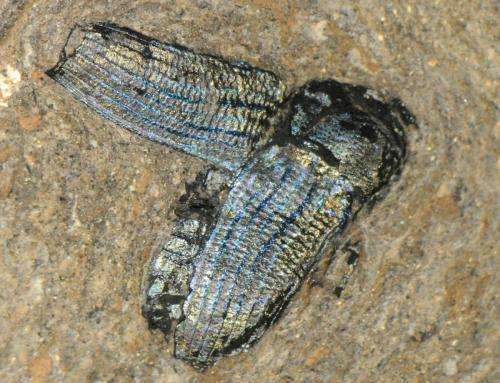Revealing fossil color

The high-tech solution to one of the great mysteries of palaeontology will be revealed by University of Bristol scientists when they showcase their latest research at the prestigious Royal Society Summer Science Exhibition.
In the past, experts have guessed what colour ancient animals were as colours are rarely preserved in fossils. But recent discoveries of colour-producing structures in fossil insects and feathers are helping scientists solve this mystery and learn about the evolution of colour and its role in communication.
The cutting-edge science and technology which has uncovered this new knowledge will be demonstrated at the Royal Society Summer Science Exhibition, which runs from 2 to 7 July in London and attracts 15,000 visitors each year.
The Bristol University exhibit, entitled 'Prehistoric colours in fossil insects and feathers', features interactive fossilisation experiments, a high-tech scanning electron microscope, a fossilisation video game and lots of genuine fossils.
Exhibit co-ordinator Dr Maria McNamara said: "Not many people know that fossils can show traces of colour. Our exhibit is a unique opportunity to excite thousands of people by science, especially hot topics in palaeontology and geology such as fossil colour."
Using modern insects and feathers, scientists have conducted experiments to measure the effects of pressure, temperature and chemicals on colours to see if and how they change over time.
They then examine fossils using powerful electron microscopes and identify which fossils have accurately preserved their colours. This will help scientists identify important changes in the evolution of colour and how it was used by animals in the past.
Professor Mike Benton, Head of the School of Earth Sciences and a world expert on vertebrate palaeontology, said: "Fossils have a universal appeal and we hope our exhibit will create a lasting positive impression of science on the general public, attracting future scientists while also raising the profile of scientific research at the University of Bristol."
Students and the community in Bristol will be able to interact with the exhibit first-hand at events based in the city later this year.
More information: sse.royalsociety.org/2013/
Provided by University of Bristol










.jpg)

.jpg)








